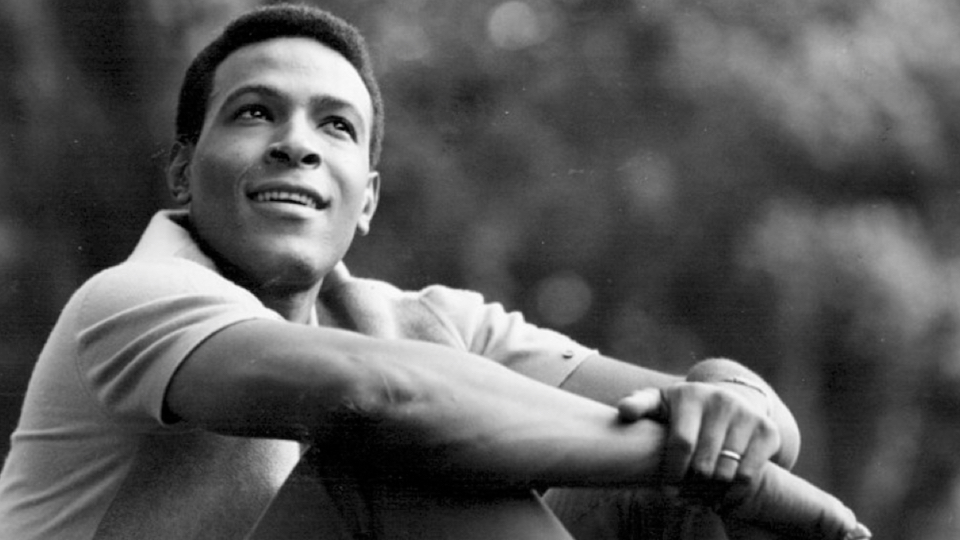Before everyone from Paul McCartney to Ed Sheeran showered him with praise, Marvin Gaye proved his credentials as a session musician and drummer. He was the drummer for Smokey Robinson and The Miracles. His stickwork was heard on “Please Mr. Postman,” earmarking a drum pattern Ringo Starr emulated nearly beat to beat on The Beatles’ makeover of the track.
Gaye backed Stevie Wonder on the decidedly wonderful “Fingertips Part 2”, offering a sense of balance as they traversed through their collective careers.
Gaye played on both the studio and live renditions of the track, giving him a standing in the world of Motown, particularly as a funk stylist. Between these recordings, Gaye developed a signature drum sound, like a mixer laying down cement.
Just listen to that backbeat on “Dancing In The Street” – a song he incidentally co-wrote. Yes, the song was re-recorded by David Bowie and Mick Jagger in the 1980s, in a desperate effort to appear cool, but there’s no doubt that the song captured the freewheeling spirit of the 1960s. Martha and the Vandellas held the frontline, Gaye centered the back, leaving the space open for the instruments to soar between the cracks.
For Martha Reeves, the song held emotional resonances: “Marvin Gaye had recorded ‘Dancing in the Street’ when I first heard it, and he had put a real smooth vocal on there, sort of like (jazzy singing) ‘Calling all around the world, are you ready for a brand-new beat, baby?’ and for some reason, Marvin said, ‘Let’s try this song on Martha.’ I was in the office and they let me hear the song, but I couldn’t quite feel it that way. I had been to Rio De Janeiro, I had traveled to New Orleans during Carnival time, so I just knew it had to be somewhere about dancing in the street. I said, ‘Can I sing it the way that I feel it?’ And they said, ‘Go ahead.'”
His antenna was widening, which is why it was only a short time before he was elected to perform his own material. Which is why it was all the more ironic that “How Sweet It Is To Be Loved By You” was actually a cover, produced by Brian Holland and Lamont Dozier. The percussion on this occasion was handled by The Funk Brothers, but Gaye’s voice – sincere and warm – more than compensated for his lack of drumming.
It was only a matter of time before he focused on his singing, which might explain why his performance on “Ain’t No Mountain High Enough” is laced with gumption and soul. Tammi Terrell sang the female harmony, and the finished result exploded with passion for a love few of us will share in this lifetime. The song made an impact, capturing the feeling and rebellion of the 1960s countercultural movement. No wonder director James Gunn included the song in his film Guardians of the Galaxy, a comic book that championed the individual spirit.
Gaye’s career took a different path from his work as an in-demand drummer, and he spent the rest of his recording career as a songwriter, chasing that ultimate thrill. His songs became beacons of honesty, as was clear from Paul Young’s excellent rendition of “Wherever I Lay My Hat, That’s My Home.” Many of his later contributions were mightier than the work he released in the 1960s, but there’s a primal innocence to the work that neither he nor his competitors have been able to match in the years since. Well, at least for the foreseeable, we’ll be dancing in the street to his drumbeats.
-Eoghan Lyng
Photo: Marvin Gaye, 1966 (public domain)
PS — While we’re on the topic of Rock History, you might enjoy our YouTube series of daily one-minute nuggets of memorable moments…






Excellent article!
Thank you!
It’s good for people to know how diverse Marvin was. “What’s Going On” (the LP) just had it’s birthday… https://open.substack.com/pub/johnnyjblair/p/happy-birthday-to-the-album-whats?r=98j2k&utm_campaign=post&utm_medium=web